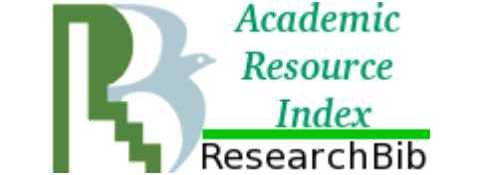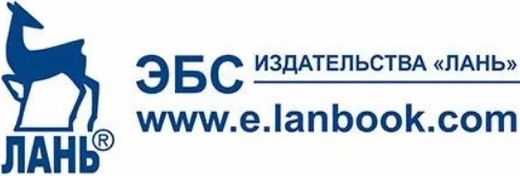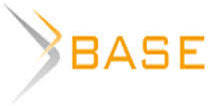THE FOREIGN TRADE OF ARMENIA WITH MAIN PARTNERS
Abstract
The geopolitical situation in the South Caucasus has sufficiently influenced the present level of economic development of the Republic of Armenia. There are three groups of geopolitical actors: global players (Eurasian Economic Union (mainly the Russian Federation), the European Union, and the USA), regional centers of force (Iran and Turkey), and locals (Armenia, Georgia, and Azerbaijan). Recently, Armenia has defined its economic preferences by joining the EEU; however other actors are still interested in economic cooperation with the RA. Thus, in this paper we investigate the levels of economic relations’ (foreign trade flows’) development of Armenia with all the above listed countries, trying to reveal the most perspective directions of foreign economic development of the RA. Our results demonstrate that Armenia has to promote a multi-directional economic policy by enhancing its export of finished goods to the EEU’s and the EU’s markets.
Introduction
The role of Armenia in the world and especially in the regional trade flows is rather modest, that is caused by some peculiarities of its historical and economical development, as well as by the geopolitical factors. On the whole, the foreign economic policy of Armenia is based on the liberal principles and is directed to the widening of its integration into the world economy. Since its independence, the Armenian government has signed bilateral trade and economic agreements with more than 40 countries all over the world. The Republic of Armenia is a member of the Commonwealth of Independent States (CIS) since 1991. Since 2003, Armenia is a member of the World Trade Organization (WTO). Since 2015, Armenia is a member of the Eurasian Economic Union (EEU) [1]. According to the governments’ declarations, the foreign trade policy of Armenia is directed to the formation of a favorable field for businesses involved in the foreign trade and to the stimulation of export of domestic goods.
As other Soviet republics, Armenia was deeply integrated into the common economic mechanism of the USSR [2]. After the collapse of the USSR all economic ties between Armenia and other republics were broken that was caused by the role played by big industrial plants that produced mostly intermediary goods, with both suppliers and customers located in the rest of the former Soviet Union republics. The geopolitical situation in the South Caucasus is not favorable for developing regional trade relations. Armenian border is blockaded by two neighboring countries: Azerbaijan and Turkey. The only land access to and from Armenia is via Georgia and Iran. Iran has been under embargo by most of the developed countries; however, recently, the situation has begun to improve [3]. At the same time, the Iranian and Georgian routes are very expensive [4]. Thus, Armenia as a small, landlocked and economically blockaded country, which faces high transportation costs that impede to export of goods.
When in the beginning of the 1990-s the South-Caucasus republics of the USSR transformed into the independent states, that started conducting their own economic policies and identifying their places on the political arena, the South Caucasus turned to be in the sphere of the geopolitical interests of both global and regional actors [5]. There are three groups of geopolitical actors: global players (the Eurasian Economic Union (mainly the Russian Federation), the European Union, and the USA), regional centers of force (Iran and Turkey), and locals (Armenia, Georgia, and Azerbaijan). This paper aims to reveal the prospects of the foreign economic cooperation relations of the Republic of Armenia (RA) with other countries considering their interests in the region.
Main Part
Present trends in the RA’s foreign trade flows
The main foreign trade’s problems that Armenia faces today are the trade balance deficit and the raw-materials export. In the period of 2001-2015 the volumes of Armenian export grew from 0.3USD billion to 1.49 USD billion (maximum value in 2014 - 1.5 USD billion); import increased from 0.9 USD billion to 3.3 USD billion (maximum value in 2012 – 4.3 USD billion); negative trade balance reached 1.8 USD billion in 2015 (maximum value in 2011 – 2.8 USD billion). Since its independence, Armenia has been a net-importer on the world trade arena (Figure 1). There are a few countries in the trade with which Armenia has a positive trade balance: Georgia (48 USD million), the Netherlands (18 USD million), Bulgaria (53 USD million), Romania (21 USD million), Canada (99 USD million), Iraq (129 USD million), Turkmenistan (17 USD million), and Syria (25 USD million) .

Fig. 1. Armenia’s foreign trade flows, USD millions
Рис. 1. Потоки внешней торговли Армении, млн. долл. США
On the whole, Armenia’s foreign trade development’s tendencies follow the world trends in international trade flows. The world economic crises stipulated decreasing of Armenian trade flows in 2009: the export volumes dropped by 371 USD millions, import – by 927 USD millions. Before 2011, the situation on the world markets has improved and Armenian foreign trade flows exceeded their before-crises values. In 2015, Armenia’s import comparing to the value in 2014 significantly decreased (-0.9 USD billion). Armenian trade balance deficit for many years has been compensated by the inflows of the transfers. In 2015, the transfers’ inflow amounted about 1.6 USD billion, while in 2014, the value was about 2.3 USD billion. Accounting that about 90% of the transfers into Armenian economy come from Russia, it’s obvious that the fall of transfers by 0.7 USD billion can be considered as a result of the economic crises [6].
The product composition of Armenian export is rather concentrated: in 2015, the share of eight product labels reached 80%; the raw-materials export exceeded 40% (product groups «Ores, slag and ash» (25%), «Iron and steel» (4%), «Aluminium and articles thereof» (6%), «Copper and articles thereof» (5%), etc.). But import flows are highly diversified: Armenia imports everything (machinery, electrical equipment, food, pharmaceutical products, furniture, apparel, at alias).
The role of the global players
The Eurasian Economic Union
The process of Eurasian integration started in 2010, when the Custom Union of Russia, Belarus and Kazakhstan was established. Later in 2012, on the territory of these states, the Common Economic Area began its functioning; the following level of integration became the establishing of the Eurasian Economic Union. The Republic of Armenia declared about its aspiration to join this organization in 2013. Today, five countries are represented in the EEU: Russia, Belarus, Kazakhstan, Armenia and Kyrgyzstan.
In our point of view, there is no sense trying to analyze the influence of the RA’s joining the EEU on the foreign trade relation of Armenia on the whole and with the EEU’s countries particularly since its establishment. It is stipulated by the following reasons: the world economic crisis, that has begun in 2007, is still influencing the international trade relations (changing of the world prices on the raw-materials, fuels, etc.), the «war of economic sanctions» between Russia and western countries, and devaluation of national currencies.
The joining of Armenia the EEU can be characterized by a few peculiarities. First, there is no common border between Armenia and the other EEU countries: in this aspect there are more political grounds in this integration. Second, Russia being the economic and political leader of the EEU is a main economic partner of Armenia that stipulated the uneven distribution of trade flows between Armenia and other EEU countries. While Russia takes the 1st place in Armenian foreign trade flows, Belarus takes the 21st in the RA’s export and 26th in import, Kazakhstan – the 22nd in Armenian export, Armenian import from Kazakhstan and trade flows with Kyrgyzstan are too small to be considered. Russia covered 95% of export and 97% of import flows between Armenia and the EEU.
Armenian enterprises provided to Russian consumers the goods with high added value. Among them, in 2015, there were such product groups as «Beverages, spirits and vinegar» (36% of the RA’s export), different types of food products (35%), and «Articles of apparel and clothing accessories» (10%). Russian import into Armenian market mainly consisted of mineral fuels (52% of import) and cereals (8%), and aluminium (6%), etc.
Trade relations between Armenia and other members of the EEU should be characterized from both positive and negative points of view. We observe growing volumes of export and import till 2014. But import has been growing faster than export and as a result there is an increasing deficit of the RA-EEU trade balance. The most part of export flows from Armenia to the EEU’s countries in 2015 consisted of the goods that provide the high added value in the national economy; however these flows are highly concentrated – here are presented mostly two product groups «Beverages, spirits and vinegar» and «Pearls, precious stones, metals».
One of the main peculiarities of integration process in the EEU is the uneven distribution of trade flows. In the European Union, for example, the share of the intra-EU trade in total export flow of each EU’s country is about 60-70% (that’s stipulated by the steady advancing development of the integration process and a high level of economic (and then political) expediency of expansion). In the EEU, the share of the EEU’s member in Russian foreign trade was about 8% of its total export-import volumes. In the foreign trade of Belarus, for example, the share of the EEU’s countries amounted 47% in 2014. Concerning the Armenian backgrounds of joining the EEU, there is one main fact: Russia is a leading economic and political partner of the RA. Today, Armenia supplies the goods with high added value generally on the markets of the post-soviet countries. Thus, the Eurasian direction in Armenian foreign trade should be advanced in both growing value and expansion of product composition aspects.
The European Union
Cooperation between the RA and the EU has started since signing the «The Partnership and Cooperation Agreement» (1999). In 2004, Armenia was included in the European Neighborhood Policy (ENP), and in 2009 – in the Eastern Partnership (EP). Within the framework of the EP, the Association Agreements, including the Deep and Comprehensive Free Trade Area, should be signed between the EU and the eastern partners (Armenia, Azerbaijan, Georgia, Moldova, Ukraine, and Belarus). However, Armenia became the member of the EEU in 2015. Thus, now-a-days, the RA-EEU cooperation has transformed into new forms. It was declared that Armenia and the EU continue their political and trade dialogue in the areas where this is compatible with Armenia’s new obligations to the EEU. At the end of the 2015, the negotiations on a new, legally binding and overarching agreement between the EEU and Armenia were opened. The new agreement will replace the current EU-Armenia Partnership and Cooperation agreement [7].
The EU countries have been the main Armenian trade partners since its independence. In 2015, the EU covered 30% of the RA’s export and 23% of import. The main EU countries where Armenian enterprises provided their goods are Germany, Bulgaria, Italy, Belgium, the Netherlands, and Romania (92% of the RA’s export to the EU). The product structure of Armenian export to the EU’s market is highly negative: the share of the raw-materials amounted about 70%. However, among the EU countries there are countries with that the RA has a positive trade balance: Bulgaria, the Netherlands, and Romania. Thus, the main characteristic of the Armenian export to the EU is a high concentration of both the product and geographical structures. As for import flows to Armenia from the EU, the structures are highly diversified in both directions: goods and countries.
The USA
In spite of the geographical distance, the USA are present in the top-10 of Armenian foreign trade partners. In 2015, the USA took the 9th place in the RA’s export flow (4%) and the 8th place in import (3%).
The dynamics of product composition of Armenian export flows to the USA’s market is rather interesting. Before 2007, the main product group was «Pearls, precious stones and metals» (60% of the total flow). In 2008, there were two main groups: «Pearls, precious stones and metals» (35%) and «Aluminium and articles thereof» (40%). In 2009, the share of a «new» product group «Aluminium and articles thereof» amounted 77% and in 2015 it was about 68%.
The role of the regional centers of force
Turkey
Although there are no diplomatic relations between Armenia and Turkey, the trade relations between countries exist. In 2015, Turkey covered 0.1% of Armenian export and 4% of its import. The share of raw-materials in Armenian export to Turkey amounted 82% (skins and leather).
Iran
In 2015, Iran covered 6% of the RA’s import respectively; besides Iran is the 8th direction of the RA’s export (5%). Since 2010, the share of the product group «Mineral fuels, oils, and distillation products» in Armenian export to the Iranian market has been about 90%. In 2001-2009, Armenian supplies to Iran were more diversified and included such product groups as aluminium, iron and steel, live animal, etc.
The role of the local players
We have mentioned before that there is no trade relation between Armenia and Azerbaijan.
Georgia
Georgia is one of the important Armenian trade partners: in 2015, it took the 5th place in export (8%) and the 9th place in import (2%) of the RA. The trade balance surplus in the Armenia-Georgia trade was about 48 USD million in 2015; that provides positive perspectives for the RA’s trade development.
The product composition of Armenian export into the Georgian market is diversified and includes the goods with high added value. They include fertilizers (21%), beverages, spirits and vinegar (20%), inorganic chemicals (11%) etc. The most part of Georgian import is referred to the intermediate goods and is used in the manufacturing process at Armenian enterprises.
Conclusions
The analysis of the foreign trade flows between Armenia and the main geopolitical actors in the South Caucasus demonstrates that these countries and integration groups play a significant role in the Armenian foreign trade (almost all of them are present in the top-10 Armenian trade partners list worldwide). In particular, we should emphasize the role of the EEU (mainly the Russian Federation - 15% of the RA export and 30% of import) and the EU (30% and 23%, respectively). However, the product structure of Armenian trade flows to Russia includes mainly goods with relatively high added value, while the RA’s export to the EU market is highly concentrated (the share of the raw-materials amounted 90%). From this point of view the Russian (Eurasian) market seems to be more perspective for Armenian suppliers. Besides, we should note the role of Georgia, with which Armenia has a positive trade balance and diversified export flows. So, Armenia has an economic platform to intensify trade relations with Georgia aiming to expand the nomenclature of the exported products. On the whole, Armenia should provide a multi-directional economic policy by enhancing its export of finished goods to the EEU’s, the EU’s and the neighboring countries’ markets.

















Reference lists